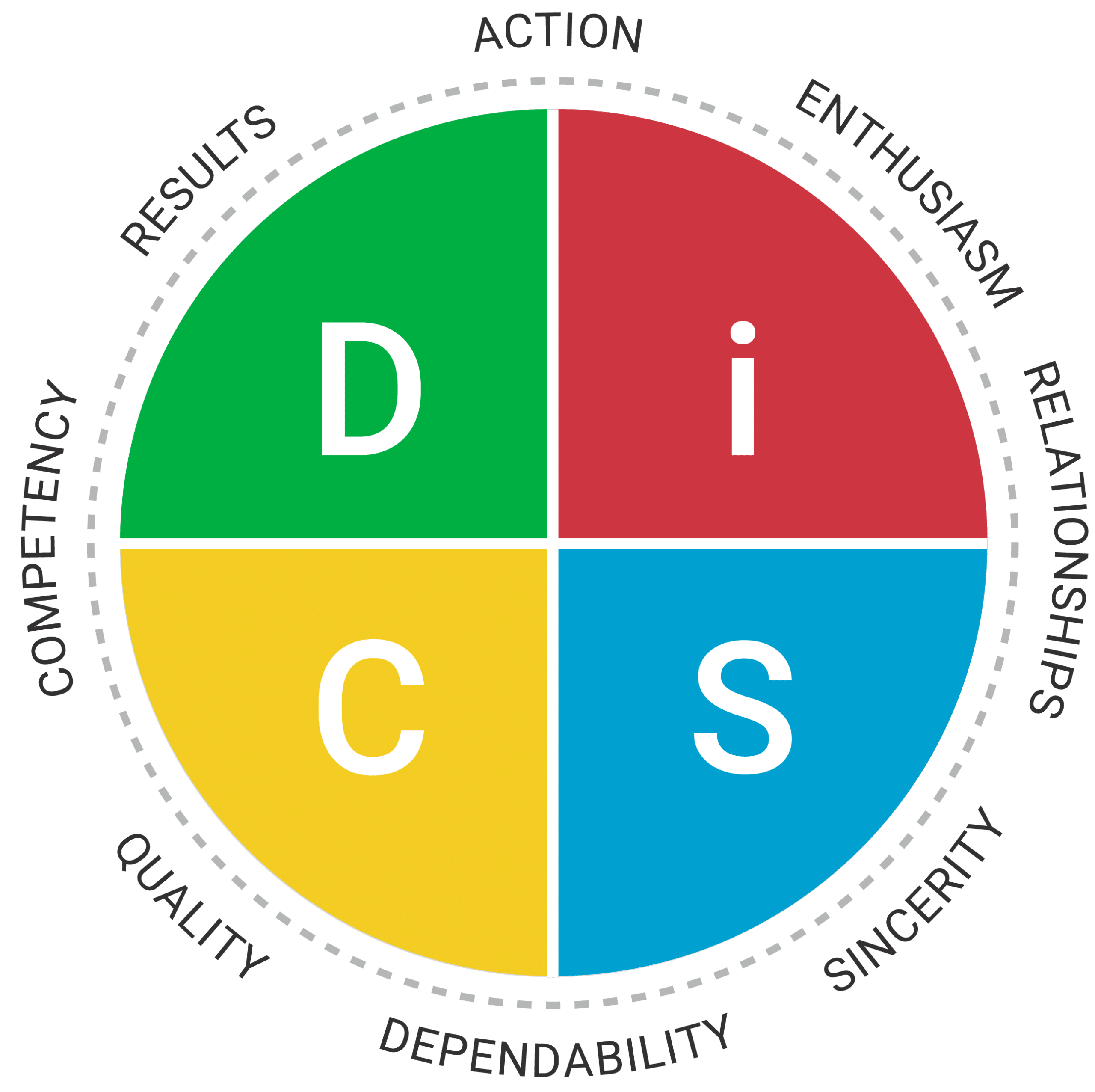
A few years ago we noticed there were four new vehicles in our parking lot: a Lexus CT200 hybrid, a MINI CooperS Countryman, a Ford F-150 SuperCab truck, and a Honda CRV. Once we started talking about our vehicle purchases, we discovered that our DiSC® priorities were obvious in our choices and in how we made those purchases.
Our buying priorities
The D priority
The Lexus was obviously bought by Nancy, a D style. She wanted status and results. She liked her current Lexus but wanted better mileage, so she went directly to the dealership. She asked the salesman about performance and luxury options. “I wanted to drive the car right away, so I drove off before learning how to work everything.” Yes, the D style can be impatient. “I couldn’t immediately get Sirius radio to work or get traffic reports. I need that.” So she called the dealer to get things working right.
The i priority
Shelly, our i style, bought the MINI Cooper. No run-of-the-mill car for her. She wanted a car that was sporty to drive, less common in her area, and that matched her energetic personality. Shelly’s salesperson knew to make her feel comfortable, treat her as though she was special, and move quickly through the buying process. After the purchase, her salesperson walked her through the car’s features including the music system. They got off track talking about features and chatted about music instead. The car Shelly liked didn’t have racing stripes, so she made sure those were added.
The S priority
Our S style, Tim, bought a Honda CRV. He bought a vehicle knowing he was going to keep it for a long time. He wanted reliability and looked for safety features. He included his whole family in the purchase process. Tim didn’t want to negotiate on price; he was more comfortable deciding on a vehicle and buying at the posted price. No high-pressure sales technique for Tim; just leave him to talk with his family. He did want the sales rep to be available to answer questions but to otherwise give him space. Tim wanted his salesperson to be genuine, have a sense of humor, and not take himself too seriously.
The C priority
Kristeen is our C and she started looking at trucks weeks before she was ready to buy. Her first trip to a dealership was to look at just the front seats of trucks to determine what she liked best. The salesman who wanted to talk about leather versus fabric and other options turned her off. She wanted her specific questions answered and that was it. Only after she had read various websites and forums, considered all the option packages, selected the exact truck she wanted, and identified the only dealer in the area who had it did she go in to make the purchase. She dismissed the offer to run through the controls with the declaration, “I’ll read the manual.” And, of course, she did.
Everything DiSC Sales buying styles

Obviously we all wanted something different from our sales reps. Some issues, such as physical comfort and color, had nothing to do with our styles. But others, such as how fast we moved and the amount of research we put in, did reflect our DiSC styles. Here’s what we’ve learned from Everything DiSC Sales, which teaches people about how they tend to sell and how they need to flex their style to accommodate each DiSC type. See if you don’t see us in the narrative of each style.
D buying style
Customers who tend toward D tend to be assertive, confident, and bold, and they are not afraid to express their opinions. These customers often know what they want and make up their minds quickly, even if the decision is important or complicated. In addition, these individuals have a take-charge attitude that may cause them to dominate conversations with others.
The D style expects a salesperson to be competent and to understand their needs. They do not want lengthy discussions or complicated analyses.
i buying style
Customers who tend toward i tend to be extroverted, optimistic, and energetic. They may see the sales process as another opportunity to socialize with others, and therefore, they may try to establish a personal relationship with the salesperson. For this reason, i-style people are likely to appreciate small talk or even tangential conversations that have little to do with what you’re selling.
The i style wants just enough information to help them make an intuitive decision. They do not want a bland solution. They want salespeople who have shown that they are trustworthy and willing to share a little bit about themselves.
S buying style
Customers who tend toward S tend to be accommodating, soft-spoken, and humble. Even though they are friendly and agreeable, they also tend to be careful, sometimes reluctant, decision makers. Most likely, they want to be absolutely sure that a decision is the right one before they commit. In addition, they often avoid change and are hesitant to take on new ways of doing things.
The S customer needs to trust whomever they work with, including a salesperson. They want to know that their needs are recognized and valued. They look for dependability and authenticity, both in the product and the sales staff.
C buying style
Customers who tend toward C tend to be reserved, analytical, and systematic. They carefully consider all their options, and they are unlikely to display great enthusiasm or animation, even if they like what they see. C-style customers want to stick to the facts, and they have little use for small talk or attempts to steer the discussion into more personal territory. In fact, they feel manipulated if a salesperson attempts to get too personal too quickly. These customers base decisions upon objective information rather than emotion or intuition.
The C style looks for dependability from the product and salesperson. In addition, they expect the salesperson and brand to be accountable for the quality of the product or service. Sales staff should be prepared to answer detailed questions from this style.
The bottom line
People in sales can learn to recognize the buying styles of their customers and better meet their interests by understanding their priorities. Companies training staff in direct sales are our most typical buyers of this profile; however, it can be helpful for marketers, designers, and customer service staff as well.
These style descriptions are paraphrased from the Everything DiSC Sales sample report, copyright by Wiley & Sons.

